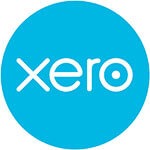At the end of July, the government finally got around to publishing its response to the 2018 consultation on employment status. The consultation took place as the result of government concerns over false self-employment, particularly in the “Gig” economy. Employers and professional bodies have heavily criticised the updated guidance as it still lacks clarity. There is even separate guidance to employers and engagers dealing with employment rights and tax status:
Employment status and rights: checklist for employers and other engagers – GOV.UK (www.gov.uk)
Check employment status for tax – GOV.UK (www.gov.uk)
Part of the problem is the lack of detail in employment and tax legislation, which means that the law has to be interpreted by the courts. The HMRC Check Employment Status for Tax (CEST) tool in particular has been criticised by tax advisors for being too simplistic and biased towards the presumption of employment.
Whether a worker is classified as employed or self-employed has important implications in terms of their employment rights and also their tax treatment. The self-employed tend to pay less tax and National Insurance Contributions (NICs) at the expense of foregoing employment rights such as sick pay, holiday pay, pensions and the right to bring an action for unfair dismissal. Deciding whether an individual is employed or self-employed is not a matter of choice. It will depend upon the particular facts surrounding the relationship.
Getting employment status wrong can have serious tax consequences. If an organisation gets it wrong and treats an individual as self-employed when they should be treated as an employee, then they are liable for the PAYE and NICs that should have been deducted. This traditionally has led to many organisations insisting that the individual should supply their services via an agency or their own personal service company (PSC) to avoid this PAYE risk.
The ”off-payroll” working rules that were extended to large and medium-sized engagers from April 2021, now require engagers to determine whether a worker operating through a PSC would be treated as an employee if directly engaged and, if so, deduct PAYE and NICs. That worker is thus taxed as if an employee, but without full employment rights – the worst of all worlds.
Employment Agencies may be liable for the tax of PSCs
As mentioned above, many organisations have traditionally requested that workers supply their services via a PSC or an agency, because up until 2021, that avoided the organisation’s PAYE risk. The IR35 rules meant that if the individual would have been treated as an employee when considering the hypothetical contract between the worker and end-user client, the PAYE and NIC would be payable by the PSC and not the end-user client. Pursuing thousands of PSCs is very expensive and inefficient for HMRC.
When the Onshore Employment Intermediaries: False Self-Employment Legislation (s44 ITEPA 2003) was introduced, it had been considered that this would not apply to the situation where an employment agency supplied workers that operate through PSCs. Many felt that the rules only applied to self-employed individuals and that the IR35 rules would take priority if the worker had their own company. However, a recent Tax Tribunal case (K5K Ltd v HMRC) involving the supply of agency nurses and healthcare workers has determined that the agency can be liable for PAYE and NICs. It is clearly more efficient for HMRC to pursue the agency for PAYE and NICs rather than numerous PSCs.
Employment status is clearly a complex area so if you need advice please contact us.









